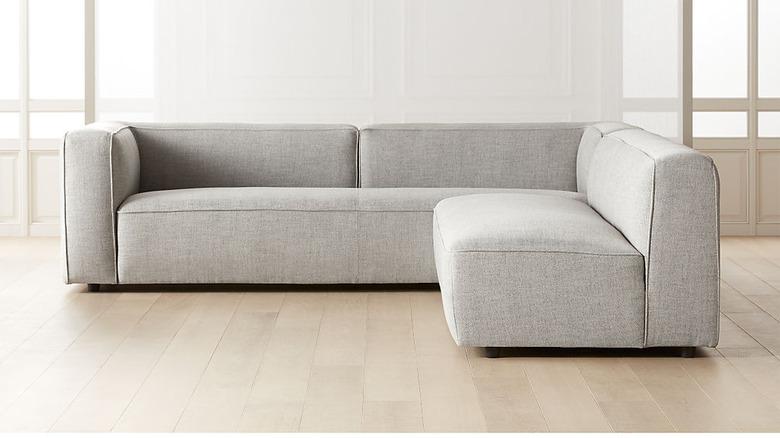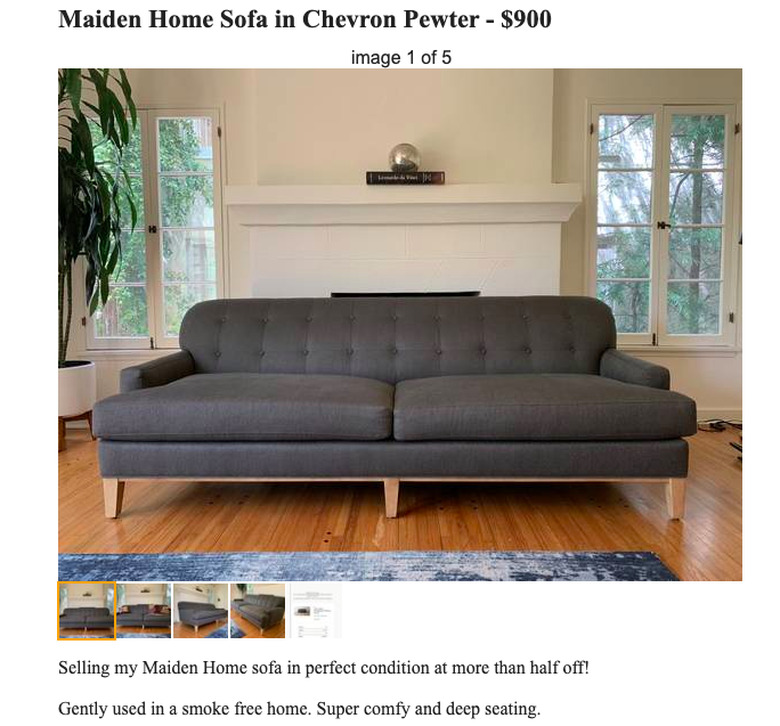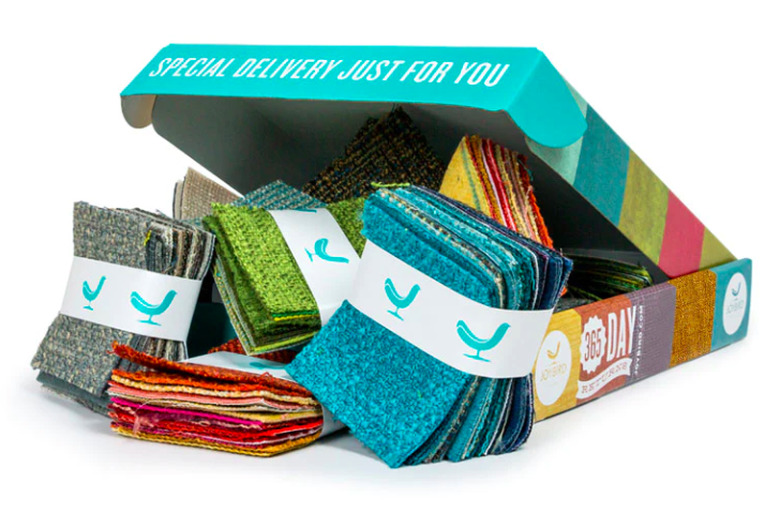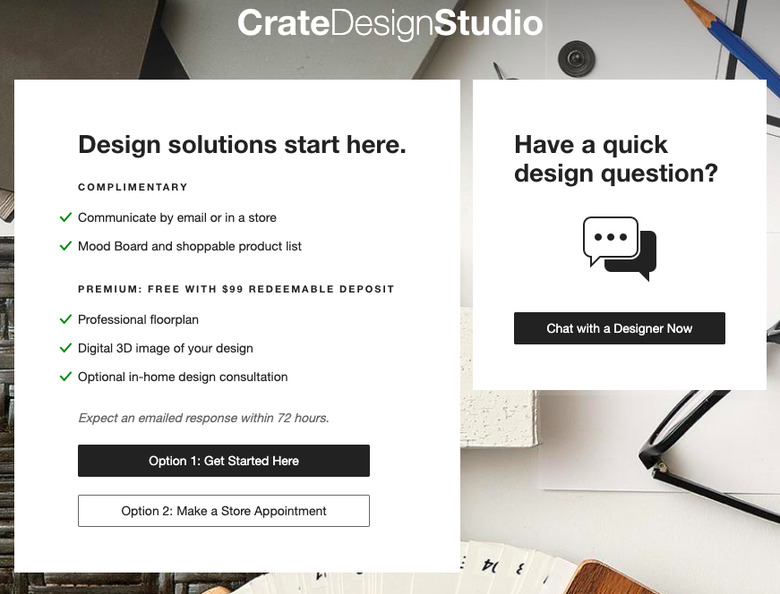12 Crazy-Important Tips For Buying The Right Furniture
1. NEVER pay full price.
If you're purchasing from a major retailer, it will pay to wait things out a few weeks — these big companies have sales ALL THE TIME, usually at 20 to 30 percent off. And if you've just missed a sale, it's worth reaching out to customer service to ask if they can apply the past promo (never hurts to ask!). If you need your purchase ASAP, at least take a moment to register for the brand's email, which usually includes something like a 10 percent welcome discount. Finally, to further save on your purchase, if the piece doesn't arrive in 1,000 percent perfect condition, call them and tell them what's slightly off; if you're okay with keeping your purchase, the retailer might kick you a 5 to 10 percent refund.
2. Use Instagram to find styling inspiration by seeing the item in others' homes.
If you're making an online purchase, a plain product photo — or even the retailer's own lifestyle shots — might not be telling you important things about texture, color, vibe, or scale. Try going to the retailer's Instagram profile and clicking on the "tagged" icon to see images where people have tagged the brand — you might get lucky and spot your item. You can also try searching by hashtag — either the brand (#ikea) or the name of the item (#hemnes; #ikeahemnes). Some retailers also encourage followers to use a specialized hashtag when uploading their own pics, usually indicated on their profile pages. CB2's, for example, is #mycb2 while Article has #ourarticle.
3. Pinterest is another good source for IRL pics.
Similar to Instagram, Pinterest can help you find the piece you want in others' homes. Try searching the brand name plus the product name. Pinterest also has a visual search feature where you can take or upload a photo of something and it will find similar items for you. So if you see a table you like in, say, a hotel room, you can take a photo and upload it to Pinterest and find similar-looking ones for sale.
4. Craigslist can give you clues as to how well the piece will hold up over time.
If you're concerned about the quality of the piece, or are worried about it looking less-than-stellar a couple years in, try searching Craigslist to see photos by people selling the same piece used: Does it look sad? Lumpy? Always worn down in the same spot? And the seller says the product is only two years old?! This tip tends to work well if your potential purchase is with a popular retailer, and it can be especially telling for couches or any upholstered furniture. If you can't find your piece in your local listings, peek around in other cities — after all, you're just looking for pics of the piece, not to buy. This might seem like a bit of a goose chase, but trust us: It's helped one of our editors completely rule out some models and a brand or two.
5. Use painter's tape to visualize the piece(s) in your space.
A measurement mistake often starts out like this: You see a couch you like online and you bust out your measuring tape. You place the tape around your space without much precision, and deem your potential new purchase a fit. Problem is, if you're measuring yourself, you can't step back to visualize very well. An easy way to do this is to use painter's tape to mark the piece's outline.
6. Measuring is important, but it's also about scale ...
With overstuffed couches and chairs or bed frames that are elaborate or significantly wider than a mattress, your room can easily start looking like a home for giants. Especially if your space already contains large or hefty items, you can risk making even a decent-sized room look cluttered.
7. And the object's relation to other objects around it.
Measure your new furniture relative not just to your space but also to other pieces you own. With couches specifically, pay attention to height, as a sofa with high arm rests might make placing a drink on your side tables awkward, while a low-slung sofa might not work with a coffee table that comes up to your knees. It's also not cute when your ottoman is the same width as your coffee table.
8. Don't forget to measure doorways and stairways.
Basically, measure anywhere the piece has to travel through to get to its final place to avoid any Friends-like "PIVOT!!!!" moments.
9. With upholstered pieces, your fabric selection should mirror your lifestyle — otherwise you can easily ruin your piece(s).
Some general warnings: Cats love to claw tweed-like fabrics, so you may want to think about materials with a denser weave, like velvet, microfiber, or even leather. If your hair is on the oilier side, or you use lots of oil-based hair products, you may want to think twice about getting a linen headboard. If you love to watch TV while eating dinner (no judgements!), a lighter colored couch might not be the safest investment. Bonus tip: To extend the life of your upholstered pieces, especially couches, find a local non-toxic fabric protection specialist and spray it before you use your item.
10. Get fabric samples!
They're usually free — either in-store, or shipped free or for a super nominal fee — and will give you a much better sense of the piece's texture and color.
11. On big purchases, give yourself plenty of time to make a decision.
If you're about to invest in a new bed frame, a dining set, or a sofa, don't feel like you need to have your shopping done in a weekend. With major retailers, styles stick around for a while, if not for years. Especially if you're buying something stylistically out of your comfort zone, you want to make sure you still feel excited about the vibe a few months later.
12. If you're having a really hard time figuring out whether an item will work in your home, see if you can get a design consultation.
Did you know? Many major retailers offer design consultation services. CB2, for example, has a partnership with Modsy that provides you with a virtual room design (using pics of your actual room) for $49 (which is then credited toward any purchase). Of course, you can always go straight to Modsy for a virtual room design if you're in the process of buying new pieces from multiple retailers. West Elm offers free in-store design consultations. Crate and Barrel offers free email or in-store consults and mood boards, and $99 (credited back to you if you buy) will get you a floor plan and an in-home consult.




